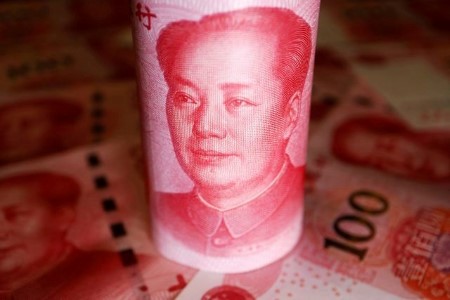




Quarterly Economic Growth Release: More BSP cuts to come
 DOWNLOAD
DOWNLOAD

Monthly Economic Update: Fed catches up
 DOWNLOAD
DOWNLOAD

Inflation Update: Steady and mellow
 DOWNLOAD
DOWNLOAD


China reports big jump in foreign capital inflows on reopening bets

SHANGHAI, Jan 18 (Reuters) – Overseas investors increased their holdings of Chinese bonds in December, snapping a record 10-month spate of outflows, and capital inflows are expected to continue into the new year, the country’s foreign exchange regulator said.
Risk appetite improved and investor sentiment was boosted after Beijing abruptly dismantled most of its strict COVID-19 curbs in December and reopened borders earlier this month, fuelling expectations for a solid economic rebound this year.
Foreign investors purchased a net USD 7.3 billion of Chinese bonds and another USD 8.4 billion of A-shares in December, according to the State Administration of Foreign Exchange (SAFE).
And foreigners added another USD 12.6 billion worth of Chinese stocks and bonds combined on a net basis in the first half of this month, it added.
Overseas institutional investors’ holdings of yuan-denominated bonds traded on China’s interbank market rose to 3.39 trillion yuan (USD 500.61 billion) at end-December from 3.33 trillion yuan a month earlier, the central bank’s Shanghai head office said.
But they still sold a net 610-billion-yuan worth of yuan bonds last year, according to Reuters calculation based on the official data.
Cross-border flows are expected to become more stable this year, the regulator said, noting optimization in COVID policies and pro-growth measures should help the economy rebound.
“Supported by the stabilization of the Chinese economic growth, the increasing attractiveness of yuan-denominated assets, and the prominence of the safe-haven properties of the yuan assets, foreign investors will continue to steadily invest in China’s securities markets,” the SAFE said in an online statement.
In less than three weeks of 2023, foreign buying of Chinese stocks has exceeded last year’s total as investors bet on the country’s rapid recovery after COVID-19 lockdowns were lifted.
Some investment banks, including ING, JPMorgan, and Goldman Sachs, have already raised their growth prospects for China this year.
“With a stronger end to 2022 than we had expected, plus indications of stronger retail expenditure ahead, the outlook for GDP growth in 2023 has improved compared to our prior outlook,” said Iris Pang, Greater China economist at ING.
“That is not to ignore the fact that China still faces considerable headwinds, including external demand, with recessions likely in the US and Europe this year.”
JPMorgan upgraded its 2023 China gross domestic product (GDP) growth forecast to 5.6% from 4.4% previously, while Goldman Sachs raised its forecast to 5.5% from 5.2% previously.
Economic growth slowed sharply to just 3.0% last year, one of its worst levels in nearly half a century, as activity was hit hard by the strict COVID curbs and a deep property market slump.
(USD 1 = 6.7717 Chinese yuan)
(Reporting by Winni Zhou and Brenda Goh; Editing by Kim Coghill)
This article originally appeared on reuters.com





 By Reuters
By Reuters